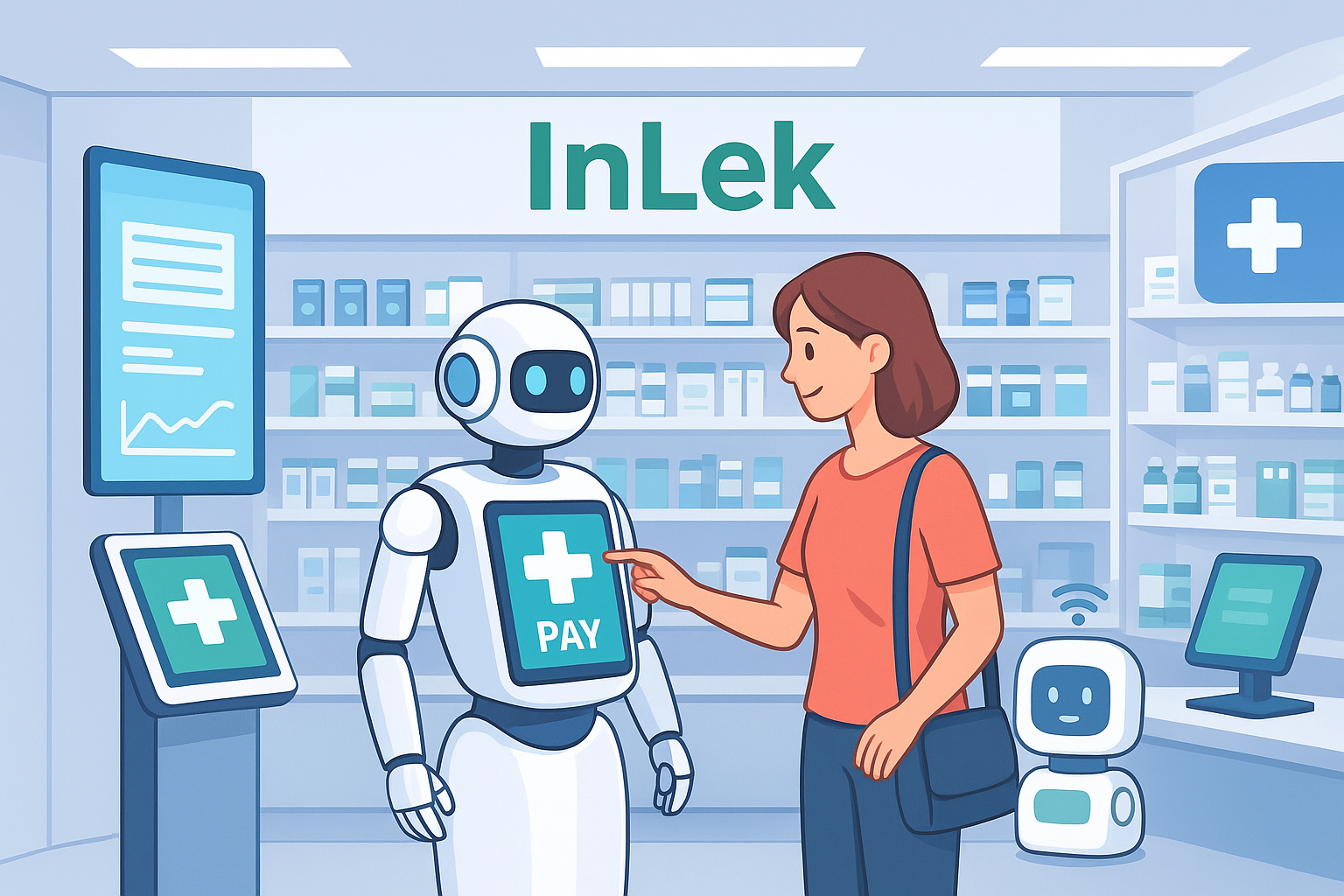Introduction
In the modern world, it is no longer enough for a business to simply produce goods or provide services. Information and media content management has become a crucial component of competitiveness.
The IT-Screen service is an example of a platform that enables centralized management of digital ecosystems. It unifies not only media content management but also business processes using built‑in tools (library, CRM, statistics, widget builder). Unlike disparate systems (SCADA, ERP, CRM), IT-Screen creates a single control point, simplifying business scaling and reducing support costs.
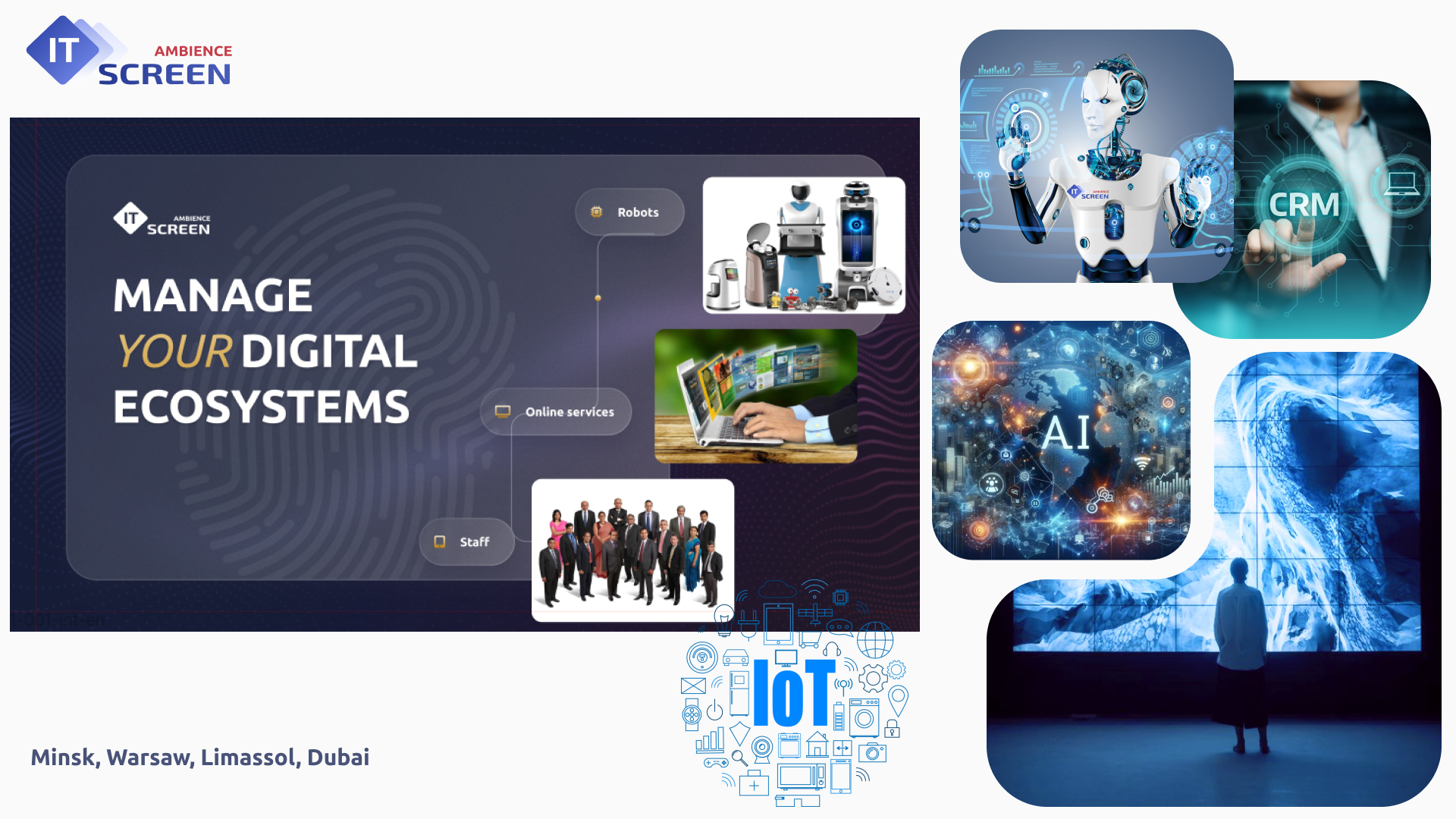
Thus, remote media content management becomes an integral part of digital transformation.
Relevance
We live in an era where information is not just a tool but a strategic asset. Media content management has become critically important for business, government, education, and healthcare. Globalization and digitalization have created a need for content that can be stored, controlled, and updated remotely, centrally, and dynamically.
Key advantages
• Response speed. Markets change within hours, and companies must instantly update informational messages.
• Flexibility. Content must be adapted for different audiences and devices.
• Security. With proper security, centralized management reduces the risk of data leaks.
• Savings. Costs for printed materials, manual labor, and physical updates are reduced.
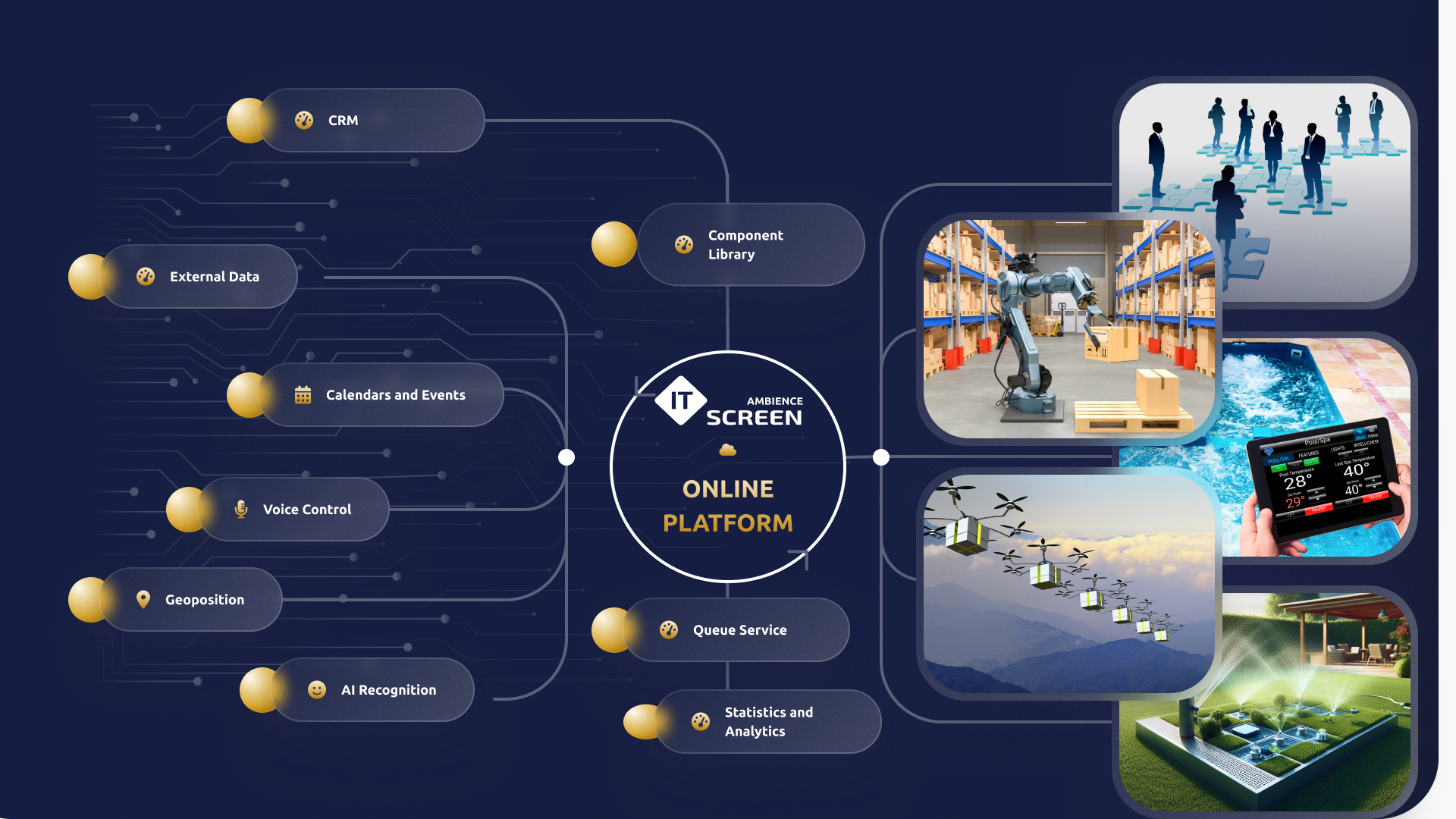
Modern Trends
At the intersection of technology and business, new directions are emerging:
• Cloud platforms. Most solutions for Digital Signage, corporate media, and advertising have moved to the cloud.
• Personalization. Content adjusts to the specific user—from a mall banner to a self‑service terminal interface.
• Interactivity. Video and graphics are enhanced with feedback—polls, QR codes, voice control.
• Artificial intelligence. AI helps automatically select relevant content.
• IoT integration. Content management systems are increasingly connected with “smart” infrastructure devices.
Global Examples
• Coca‑Cola uses Digital Signage to instantly update ad campaigns worldwide.
• McDonald’s remotely manages menu boards in thousands of restaurants, adapting them to time of day, promotions, and national specifics.
• London Underground implemented centralized control of digital displays to inform passengers in real time.
• Pfizer and other pharmaceutical leaders use digital systems in offices and pharmacies for instructions, advertising materials, and corporate messages.
These cases prove: scalability and flexibility are achieved only through remote management.
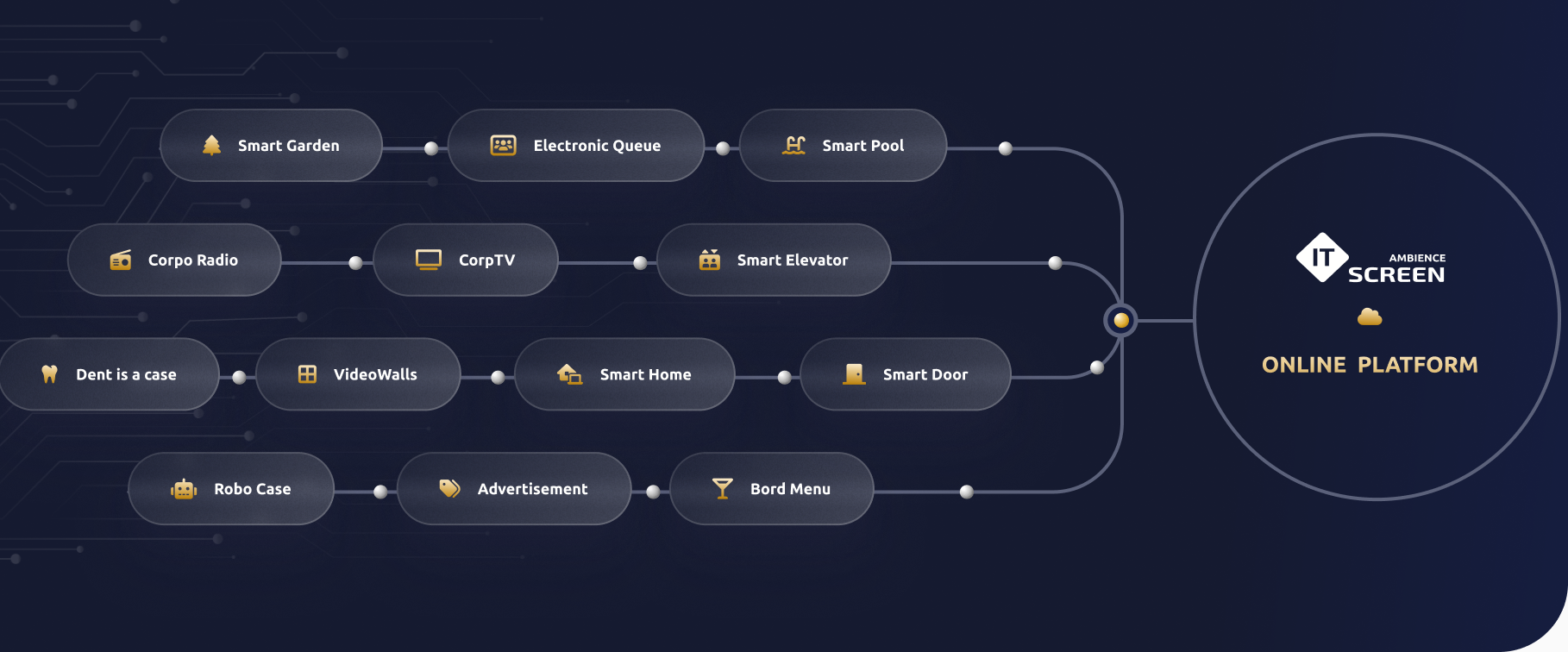
The IT-Screen service incorporates all these trends: it uses the philosophy of «Karmic Lists» (dynamic sequences and action scenarios) and allows fast and flexible media configuration for even the most demanding audience.

Practical Experience of «InLek» (Republic of Belarus) Using IT-Screen
The pharmaceutical company InLek implemented remote content management based on the cloud service IT-Screen. This enabled centralized management of advertising and informational materials, fast adaptation to different working conditions, and detailed display statistics for every media asset.
Main Capabilities of IT-Screen
• Content Library — a virtual storage of images, videos, documents, HTML widgets, audio, and streams. All materials are instantly available to any pharmacy.
• Screen Layouts — configuration of virtual windows. IT-Screen supports full‑screen content, partial layouts, tickers, and media walls. For example, a single display can simultaneously show an advertising video, a brand logo, and relevant information for customers.
• Karmics (playlists) — dynamic content lists with rotation, filtering, and synchronization settings. Unlike static videos, they are automatically updated depending on the time of day, promotional calendar, or pharmacy workload.
• Devices — any physical screens (monitors, cash registers, advertising panels) connected to the system. InLek manages them centrally: subscribes to the necessary playlists, monitors status, sets parameters (brightness, volume, switch-on time).
• Tags — an intelligent mechanism linking devices, windows, and content. For example, cash registers are tagged with #CashSS, and display panels with #Promo. This simplifies mass administration and automatic playlist routing.
• CRM — automation of document generation based on stored templates.
• A key case — the Cash and Settlement Services (CashSS) widget.

 | 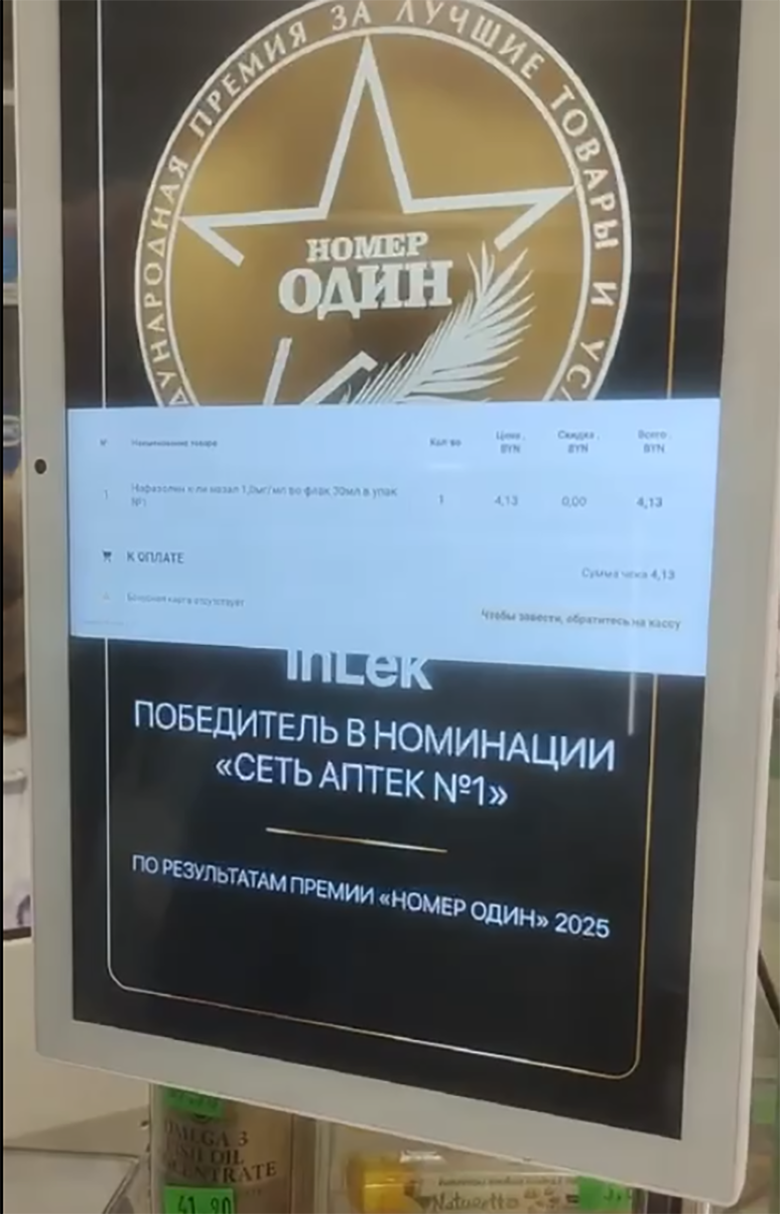 |
|---|
Dynamic Media Content Management: When Screens «Live» with the Business
Today, it is no longer enough to simply hang a screen and play a video on it. The true value of technology lies in its ability to be flexible and adapt to the life of the company and its customers. This is precisely why the dynamic media content management system was created.
What does this mean in practice? The information on the screens—from images and prices to descriptions and promotional offers—is updated automatically, without the involvement of employees or lengthy preparations. The cashier works at their automated workstation, and at the same moment, the current image “pops up” on the screen: a new price, discount, or fresh promotional offer. Everything happens in real time, and the business gets the opportunity to talk to the customer here and now.
Why is this important?
• Speed. No manual replacements or re‑uploads.
• Flexibility. Any change appears instantly.
• Savings. No printed materials.
• Accuracy. No outdated data.
• Single control center. One interface for the whole network.
• Personalization. Morning cold remedies, daytime vitamins, evening sleep aids.
• Instant marketing. Promotions start immediately.
• Integration. Works with CRM and other systems.
• Budget optimization. Digital is cheaper.
• Engagement. Dynamic screens grab attention.
It’s essentially a smart screen—an online communication channel that adapts to business needs.
Cash and Settlement Services (CashSS) in InLek pharmacies is a practical example.
 |  |
|---|
IT-Screen Implementation: From First Tablets to a Large Network
Any technology is not only about hardware and software, but also about the people who will work with it. InLek understood this from the very beginning when they decided to implement the IT-Screen service for remote and dynamic content management on pharmacy screens. The process was carried out in stages — from the first experiments to a large-scale network.
The first step was training. Not just instructions, but a hands-on immersion: the company's marketers learned how to work with the system, manage playlists, and understand how content “lives” on the screen. It was important to remove the barrier of “new technology” and show that IT-Screen is an assistant, not an additional burden.
Next came testing. MediaStroyImage LLC employees connected and configured 12 tablets in four pharmacies for InLek. It was a kind of pilot project. Here, InLek staff underwent training directly at their workplace, practiced scenarios, and at the same time saw how the system works in real conditions. This format helped to quickly identify nuances and convince employees that the technology is reliable and simple.
After a successful launch, it was time to scale up. The system went into commercial operation in 27 pharmacies at once. Sixty tablets and two large screens appeared there, becoming a striking feature of the pharmacy space. IT-Screen now covered the entire network, providing a unified information field and centralized management.
Technology does not stand still, which means that the learning process continues. InLek has opted for a systematic approach: employees regularly undergo training, learn new functions, and receive advice from technical specialists at MediaStroyImage LLC. Support is available at all stages, from device setup to resolving minor issues. This reduces stress and strengthens confidence in the system.
But that's not the end of the story. The company plans to install another 50 tablets in an additional 20–25 pharmacies by the end of 2025. This will expand its reach and bring it even closer to its customers.
The Future: The Pharmacy as a Digital Ecosystem
The prospects for further development of cooperation between InLek and MediaStroyImage LLC are even more ambitious: today, the IT-Screen service is about screen and content management, but tomorrow it will become the heart of the entire digital infrastructure of pharmacies.
What could this future look like?
• Self‑checkout systems. The checkout screen will become a full-fledged media center: shoppers will scan items and pay for their purchases themselves, while promotions, recommendations, and useful tips will be displayed on the same screen.
• IoT devices in pharmacies. Electronic price tags, smart display cases, and navigation panels will be connected to a single network, where any change in the system will be instantly reflected in the sales area.
• Voice control and CRM integration. The screen will start «talking» to the customer: suggesting the right recommendations to the pharmacist, helping the buyer find products, and generating personalized offers.
• A hybrid of physical and virtual. The pharmacy of the future will combine offline and online: screens will be synchronized with mobile applications, send push notifications, and even work in augmented reality using neural networks and artificial intelligence.

Conclusion
The story of IT-Screen's implementation in the InLek pharmacy chain is not just about new screens and modern software. It is a story about the courage to keep up with the times, the willingness to take risks for the sake of the future, and trust in innovation. InLek's management and employees demonstrated a truly innovative and entrepreneurial strategy: they saw potential where others might have settled for familiar tools. It is thanks to their openness to technology that pharmacies have become a digital platform for communicating with customers.
No less credit goes to MediaStroyImage, which took on the technical and organizational implementation of the project. The company's specialists demonstrated the highest level of expertise: from fine-tuning the equipment and integrating it with cash register systems to training staff and providing support at all stages. Their work proved that the implementation of IT-Screen is not only about technology, but also about organizational skills and the ability to manage a project step by step, taking into account both business objectives and the human factor.
Today, InLek and MediaStroyImage can confidently be called partners who are jointly shaping the future of the pharmaceutical industry. And that future is already here: screens no longer just broadcast advertisements, they are becoming a dynamic channel of communication, a marketing tool, and part of the digital ecosystem of pharmacies. InLek has shown that innovation in the hands of bold managers and professional executors can change entire industries.
